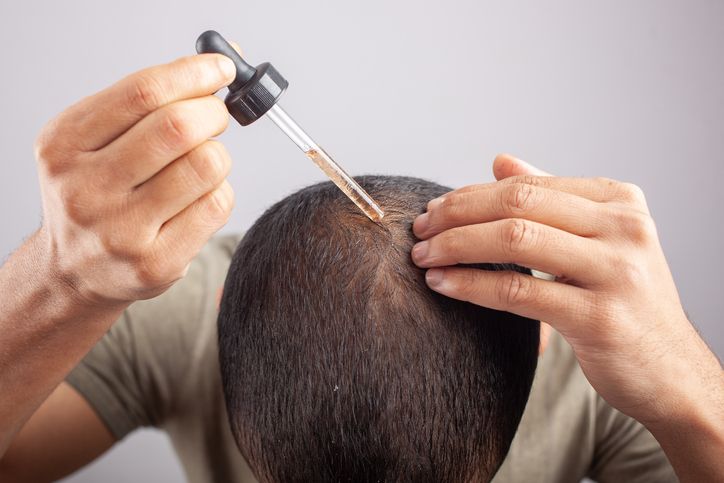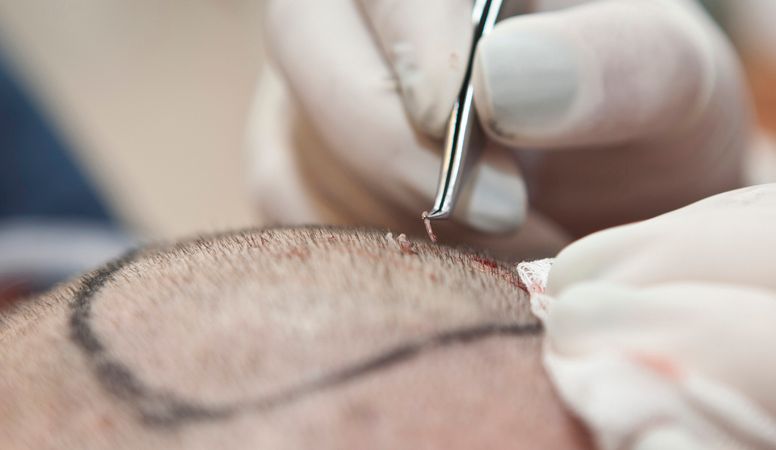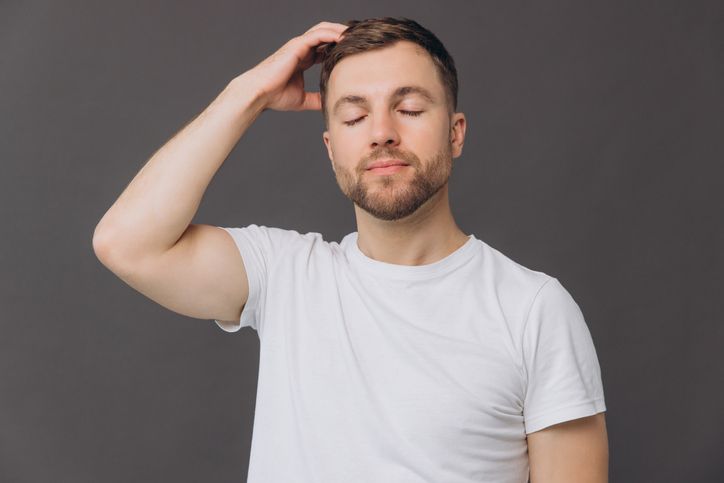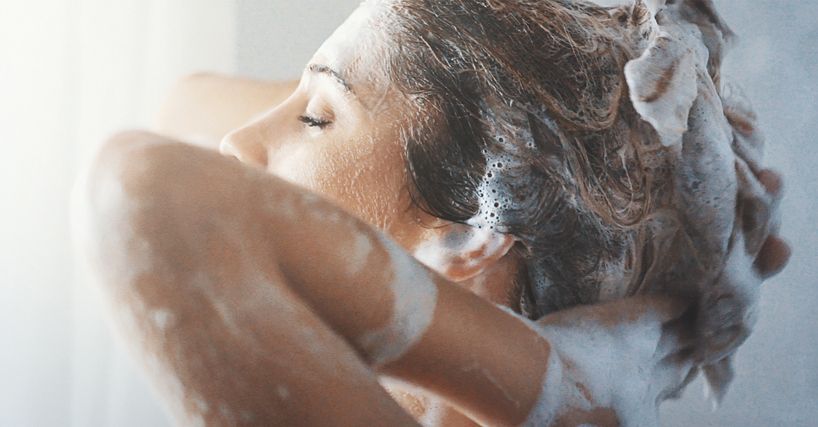
Author: Natalie Ng|Updated: 30 April 2025
Hair loss hits a lot of men in their 20s, 30s, and 40s. It might start with a little more scalp showing or a receding hairline, then slowly turn into thinning hair or even bald spots. The most common cause is male pattern baldness—a condition where a hormone called DHT makes your hair follicles shrink, messing with your hair growth cycle. The good news? There are solid ways to treat hair loss and even regrow hair. Backed by `research and experts, these include FDA-approved medications, hair transplants, and simple changes to your routine. Ahead, we’ll break down six solutions that actually work to stimulate hair growth, slow further hair loss, and help you keep healthy hair—whether you’re just starting to notice it or already dealing with noticeable thinning.

FDA-Approved Medications: Finasteride and Minoxidil

Two FDA-approved medications are proven to treat male pattern hair loss: finasteride and minoxidil. These are the most widely used treatments for hair loss in men, especially those with androgenetic alopecia.
How Finasteride Works
Finasteride is an oral medication that lowers levels of dihydrotestosterone (DHT)—the hormone that causes hair follicles to shrink in male androgenetic alopecia. By reducing DHT, finasteride helps slow hair thinning, protect existing hair, and may even support new hair growth.
It’s often used to treat receding hairlines and thinning at the crown, which are common in the early stages of pattern hair loss. Clinical studies show that most men who take it daily see a reduction in further hair loss and some degree of hair regrowth over time.
How Minoxidil Works
Minoxidil is a topical treatment (liquid or foam) applied directly to the scalp. It works by improving blood flow around the hair follicles, which helps extend the growth phase of the hair growth cycle. This can increase hair density and slow down increased hair shedding.
Minoxidil is often used to treat noticeable thinning and bald spots, especially at the crown. It’s available over the counter, but results depend on consistent use—usually twice a day.
Using Both Together
Finasteride and minoxidil target different causes of hair loss, so using them together often gives better results. It takes time—most people need to use them for 3 to 6 months before they start seeing changes in hair volume or hair regrowth.
Keep in mind that stopping treatment can reverse progress, and side effects are possible. Always speak to a doctor before starting any male hair loss treatment.

Advanced Hair Transplantation Techniques

Hair transplants are a long-term solution for male pattern baldness. They work by moving healthy hair follicles from thicker areas of your scalp (usually the back or sides) to areas with thinning hair or a receding hairline. Today, there are two main methods used: Follicular Unit Extraction (FUE) and Follicular Unit Transplantation (FUT).
FUE (Follicular Unit Extraction)
FUE removes individual hair follicles from the donor area. Each follicle is then implanted into the thinning or bald spots. This method leaves tiny dot scars that are barely visible and has a faster recovery time—usually around 5 to 7 days.
FUE is a good choice if you want shorter downtime or prefer to keep your hair short without visible scarring. It’s more time-intensive, which can make it costlier, but the results look natural and permanent if done correctly.
FUT (Follicular Unit Transplantation)
FUT, often called the strip method, removes a thin strip of scalp from the back of your head. The surgeon then divides this strip into smaller grafts and transplants them to areas affected by male hair loss.
While FUT leaves a linear scar, it can move more grafts in one session. This makes it useful for men with advanced hair thinning who need broader coverage. Recovery takes longer—about 10 to 14 days.
What to Expect After the Procedure
Both methods follow the same hair growth cycle after surgery:
• Weeks 1–2: Minor swelling and scabbing.
• Weeks 2–4: Temporary shedding of transplanted hairs (normal part of the process).
• Months 3–6: New hair regrowth begins.
• Months 12–18: Full results develop, including better hair density and coverage.
Results are permanent because the transplanted follicles are resistant to DHT, the hormone that causes hair follicles to shrink in androgenetic alopecia.
Hair transplants don’t stop further hair loss in untreated areas, so some men combine them with treatments like minoxidil or oral finasteride to maintain full coverage and support overall hair health.
Read More
Book Now to Experience
F8 Hair Regrowth Treatment
1 Minute Self-Registration
Date should not be before minimal date

Essential Nutrients and Dietary Changes

Your diet has a direct impact on your hair health. Without the right nutrients, your body struggles to keep your hair follicles strong and in their active growth phase. If you're dealing with male hair loss, especially from androgenetic alopecia, eating the right foods can help slow down hair thinning and support new hair growth.
Key Vitamins and Their Role in Hair Growth
Some vitamins and minerals are closely linked to hair growth and hair shaft strength. A lack of these can trigger increased hair shedding, especially if combined with hormonal factors or thyroid disorders.
| Vitamin | How It Helps | Where to Get It |
|---|---|---|
| Biotin | Strengthens the hair shaft | Eggs, nuts, seeds |
| Vitamin D | Stimulates hair follicles | Fatty fish, sunlight |
| Vitamin E | Boosts blood flow to the scalp | Avocados, almonds |
| Iron | Supports oxygen supply to the roots | Leafy greens, lean red meat |
| Zinc | Helps tissue growth and repair | Shellfish, chickpeas |
Deficiencies in these nutrients are common in people who notice hair loss or go through hair thinning without an obvious cause.
Foods That Support Hair Health
You don’t need special supplements to improve your hair density—just focus on meals rich in whole, nutrient-dense foods:
• Protein: Hair is made of keratin, a protein. Lean meats, fish, and eggs give your body what it needs to build strong hair.
• Omega-3 fatty acids: Found in salmon, walnuts, and flaxseeds, they reduce scalp irritation and promote healthy hair.
• Iron-rich foods: Spinach, lentils, and red meat help keep blood flowing to your hair follicles.
• Zinc and selenium: These minerals protect follicles and reduce the risk of hair disorders.
Build a Sustainable Meal Plan
For long-term results, aim for a balanced diet rather than a short-term fix. Plan your meals to include:
• A protein source at every meal
• Iron and zinc from plant or animal sources
• Healthy fats from avocados, olive oil, or nuts
• Hydration to support scalp and skin health

Scalp Care and Hair Growth Stimulation

A healthy scalp is essential for hair growth. If your scalp is inflamed, clogged, or overly oily, it can block hair follicles and interfere with the hair growth cycle. Poor scalp health can also increase the risk of noticeable thinning, especially in men with male androgenetic alopecia.
Good scalp care helps prevent hair loss, reduce scalp irritation, and create the right conditions for new hair growth.
Why Scalp Health Matters
Your scalp is where each hair follicle lives. If the environment is unhealthy, your hair can shift into a resting phase (telogen) earlier, leading to increased hair shedding or slowed growth.
Common issues that affect scalp health:
• Oil buildup that clogs follicles
• Dead skin cells that block hair from emerging
• Dandruff or inflammation that irritates the scalp
• Overuse of styling products that create residue
These problems can make it harder for treatments like topical minoxidil to work effectively.
Basic Scalp Care Routine
Keeping your scalp clean and balanced doesn’t need to be complicated. Stick to simple habits:
• Wash with a gentle shampoo 2–3 times a week to avoid buildup
• Use lukewarm water to prevent dryness
• Avoid scratching or over-exfoliating
• Massage your scalp regularly to improve blood flow and oxygen supply to the hair follicles
Scalp massage, when done daily for a few minutes, can help improve hair volume by increasing circulation and reducing stress—another cause of hair thinning.
Advanced Scalp Treatments
If basic care isn’t enough, there are other ways to support your scalp:
• Laser therapy: Low-level lasers stimulate blood flow and may help extend the growth phase of your hair
• Platelet-rich plasma (PRP): A treatment where your own blood is used to inject growth factors into the scalp, encouraging stronger, faster hair regrowth
• Medical shampoos: For conditions like seborrheic dermatitis or dandruff, which can block healthy hair growth
Book Now to Experience
F8 Hair Regrowth Treatment
1 Minute Self-Registration
Date should not be before minimal date

Prescription-Strength Topical Treatments and F8 Hair Regrowth: A Combined Approach
For men facing male pattern baldness, combining multiple treatments often leads to better results than using one method alone. Prescription-strength topical treatments and the F8 Hair Regrowth Treatment can work together to effectively stimulate hair growth, reduce hair thinning, and support long-term hair health.
Topical Finasteride: Targeting DHT at the Source
Topical finasteride directly reduces dihydrotestosterone (DHT) levels at the scalp. Since DHT causes hair follicles to shrink in male androgenetic alopecia, lowering it can slow hair loss, prevent further hair shedding, and help maintain hair density.
Many doctors prescribe topical finasteride for men who don’t respond well to over-the-counter products. It’s also often combined with high-strength minoxidil or other ingredients that promote new hair growth.
New Beauty’s F8 Hair Regrowth Treatment: Supporting Scalp Function and Follicle Health
While prescription formulas work chemically, the F8 Hair Regrowth Treatment strengthens the scalp’s natural ability to grow hair. It uses low-level laser therapy to boost blood flow and oxygen to the scalp, helping hair follicles stay active. The laser also repairs tiny capillaries and strengthens the hair papilla, creating the right conditions for continuous hair regrowth.
F8 also penetrates deeper than most topical products, helping to improve scalp irritation, balance oil production, and promote healthier skin beneath the surface—something topical treatments alone may not fully achieve.
Why This Combo Works
Using prescription topical treatments together with F8 Hair Regrowth gives your scalp both the internal and external support it needs:
• Finasteride reduces the hormone that causes hair loss
• F8 strengthens the physical structure of your scalp and improves blood flow
• Together, they improve response rates and reduce the need for more invasive treatments
This approach is especially helpful for men experiencing slow results with standalone products, or those wanting to take early action against receding hairlines or bald spots.
Book an appointment to see if F8 can complement your existing hair loss treatment plan. When used with the right prescription treatments, it can strengthen results and help you maintain healthy hair long-term.
New Beauty's F8 Hair Regrowth Treatment
Lifestyle Modifications and Stress Management

While medications and treatments like F8 Hair Regrowth or topical finasteride are important for tackling male hair loss, your daily habits also play a big role. Hair growth depends not only on what you apply to your scalp, but also how well your body functions overall. Making a few key changes to your lifestyle can support hair health, slow further hair loss, and improve how well other hair loss treatments work.
How Stress Affects Hair
Chronic stress can push your hair follicles into a resting state (telogen), which may lead to increased hair shedding—a condition known as telogen effluvium. Stress also impacts your hormones, including those linked to androgenetic alopecia, and may worsen existing hair thinning.
You might notice signs like:
• Sudden or patchy hair fall
• Slower hair growth
• Worsening of existing pattern hair loss
Everyday Habits That Support Hair Growth
Improving your overall health helps protect your scalp and reduce triggers for hair disorders. Here’s what to focus on:
• Sleep well: Aim for 7–8 hours a night to regulate hormone levels and reduce inflammation
• Exercise regularly: Boosts circulation, which helps bring oxygen to your hair follicles
• Manage stress: Activities like walking, journaling, or focused breathing can reduce cortisol levels
• Cut back on heat styling: Avoid damage from frequent use of dryers or flat irons
• Limit harsh products: Alcohol-based gels or shampoos can irritate the scalp
Nutrition and Hydration
Even if you're using the right male hair loss treatment, your body still needs proper fuel. Stick to a balanced diet rich in protein, healthy fats, and iron to support both your scalp and hair shaft. Staying hydrated also helps prevent a dry, irritated scalp.
Making It All Work Together
These changes don’t replace medical treatments, but they do help you get better results from them. Whether you’re using oral finasteride, trying the F8 Hair Regrowth Treatment, or recovering from a hair transplant, keeping your body healthy makes a difference in how well your hair grows and how long you can maintain your results.
Want the best results from your hair loss treatment? Start by improving your daily habits—your scalp and your hair will thank you.
Book Now to Experience
F8 Hair Regrowth Treatment
1 Minute Self-Registration
Date should not be before minimal date
FAQ
Can Hair Loss Be Influenced by the Type of Water I Shower With?
Your shower water's mineral content can affect your hair health. Hard water, which contains high levels of calcium and magnesium, can leave mineral buildup on your scalp and hair, potentially contributing to hair thinning and breakage. Additionally, chlorine in treated water may strip your hair's natural oils and cause dryness. You can combat these issues by installing a shower filter or using clarifying shampoo regularly.
Does Wearing Hats or Helmets Regularly Contribute to Male Pattern Baldness?
Wearing hats or helmets doesn't directly cause male pattern baldness, as this condition is primarily driven by genetics and hormones. While extremely tight headwear could potentially cause traction alopecia, a different type of hair loss, you'd need to wear your hat uncomfortably tight for extended periods. Regular hat-wearing with proper fit won't affect your hair's growth cycle or contribute to baldness patterns, so you can confidently wear your favorite headwear.
How Long Does It Typically Take to See Results From Hair Growth Treatments?
Patience proves paramount when pursuing hair growth progress. You'll typically notice initial results from most treatments within 3-6 months, but one must recognize that full results often take 12-18 months of consistent use. Prescription medications like finasteride and minoxidil generally show results around month 4, while natural remedies and supplements might require 6-8 months before you'll see noticeable improvements in hair density and thickness.
Are There Any Sexual Side Effects Associated With Hair Growth Treatments?
Some hair growth treatments, particularly medications like finasteride, can cause sexual side effects. You might experience decreased libido, erectile dysfunction, or problems with ejaculation. These issues affect roughly 2-5% of users and typically resolve when you stop the treatment. Topical treatments like minoxidil don't usually cause sexual side effects. It's important to discuss these potential risks with your healthcare provider and weigh them against the benefits.
Can Genetic Hair Loss Skip Generations or Affect Only Certain Family Members?
Yes, genetic hair loss can skip generations and affect family members differently due to the complex nature of inheritance patterns. You might experience hair loss even if your parents don't have it, as the genes can come from either side of your family tree. Additionally, multiple genes influence hair loss, and environmental factors can trigger genetic predispositions, which explains why siblings can have varying degrees of hair loss.
Recommended Articles
COPYRIGHT© NEW BEAUTY MANAGEMENT LIMITED 2025. ALL RIGHT RESERVED.




